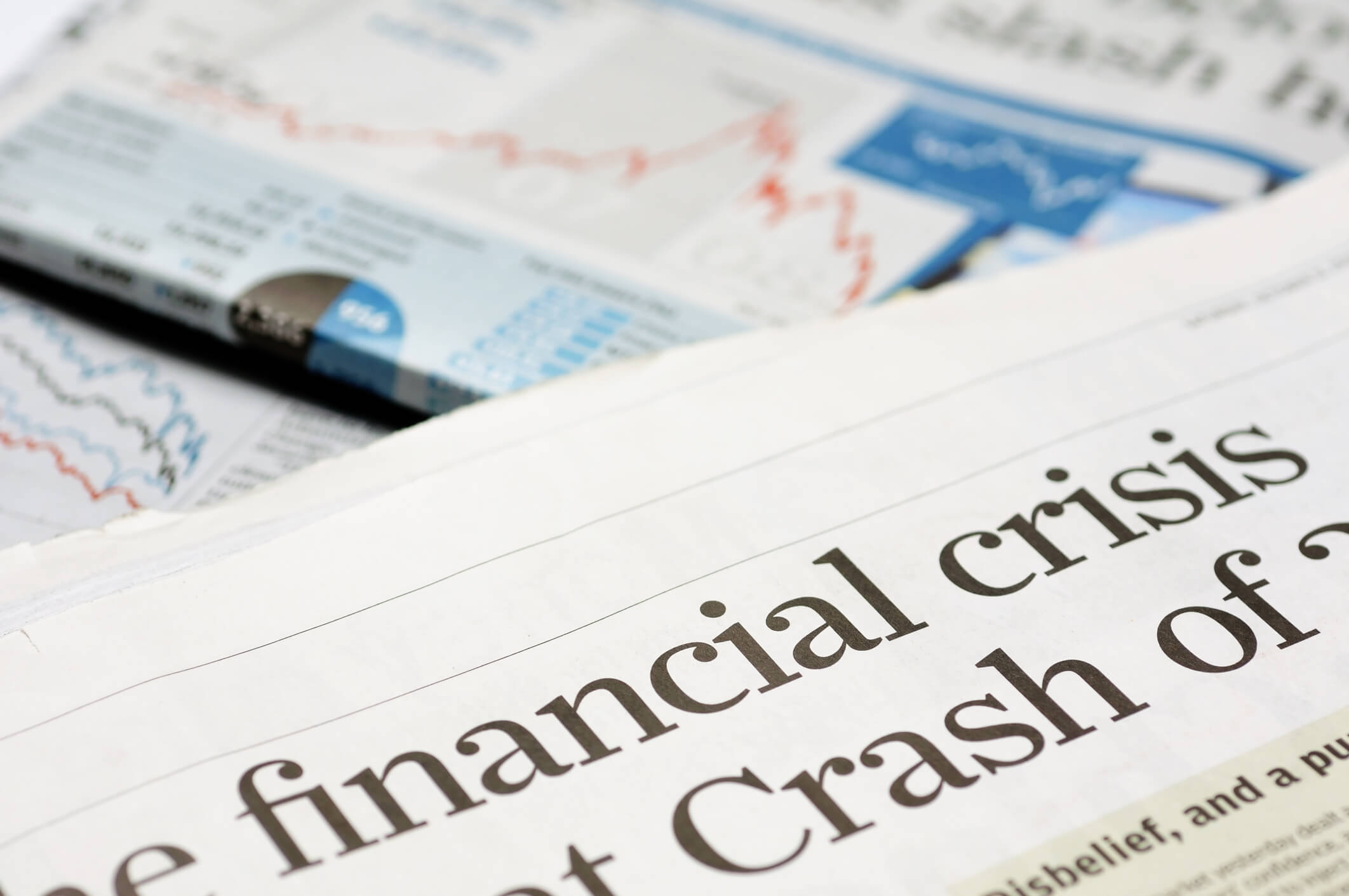Double Dip Recession: What Business Leaders Need to Know Now
A double-dip recession occurs when an economy briefly recovers from an initial recession, only to fall back into another downturn before achieving full recovery, creating a distinctive W-shaped economic pattern. This economic phenomenon involves two periods of negative GDP growth separated by a short-lived recovery phase, making it particularly challenging for businesses and individuals who believe the worst has passed.
The rarity of double-dip recessions makes them especially dangerous—only two clear examples exist in modern U.S. history since the Great Depression: 1937-1938 and 1981-1982. As someone who’s guided thousands of businesses through economic uncertainty over the past two decades at Complete Controller, I’ve witnessed firsthand how these false recovery signals can devastate unprepared companies. This article arms you with the historical insights, warning signs, and strategic preparation tactics that separate businesses that thrive from those that barely survive when economic recovery falters.

What exactly is a double-dip recession?
- A double-dip recession is an economic pattern where recovery from an initial recession fails and the economy contracts again, creating a W-shaped trajectory
- The first dip involves negative GDP growth, followed by positive growth that appears promising
- The second dip occurs when this recovery stalls and GDP turns negative again before full economic health returns
- The pattern typically spans 18-36 months total, making it longer than standard recessions
- Both dips must meet the technical recession criteria of two consecutive quarters of negative GDP growth
The Anatomy of Double-Dip Recessions
Double-dip recessions represent one of the most challenging economic patterns businesses can face, distinguished by their deceptive recovery phase that lures companies into premature expansion. The fundamental mechanics involve an economy that exists in recession, grows briefly, then contracts again while still below pre-recession levels. Martha Olney, economics professor at UC Berkeley, captures this perfectly: “The analogy I like to use is when you’re in the hospital and you have surgery, you come out of surgery and you’re in recovery and you’re making progress, and then all of a sudden you have a relapse.”
The W-shaped trajectory creates unique challenges because businesses exhaust resources during the first downturn, begin investing during the false recovery, then face a second contraction with depleted reserves. Statistical analysis reveals that using a broader definition of 18 months between contractions, double dips have occurred in 8 of the 11 U.S. recessions since World War II. The National Bureau of Economic Research emphasizes that classification depends on “the duration and strength of the upturn after the initial trough”—if the recovery proves too weak or brief, the second decline becomes part of the original recession rather than a new event.
Economic patterns that define double-dips
The distinguishing characteristics of double-dip recessions create specific economic signatures that alert observers to developing risks. Recovery periods between dips typically last 6-12 months, long enough to generate optimism but insufficient for structural economic healing. GDP growth during these interim periods often reaches 2-4% annually, creating an illusion of normalcy that masks underlying weaknesses.
Business investment patterns during double dips show initial enthusiasm followed by rapid retrenchment as companies realize the recovery lacks foundation. Employment gains during the false recovery rarely offset initial job losses, leaving unemployment elevated when the second downturn strikes. Credit markets exhibit particular stress during double dips, as lenders who relaxed standards during apparent recovery quickly tighten again, creating financing shortages precisely when businesses need capital most.
Historical Examples and Case Studies
The 1981-1982 U.S. double-dip recession provides the definitive modern example of this phenomenon, demonstrating how policy decisions can transform a manageable downturn into extended economic trauma. The first recession lasted from January to July 1980, triggered by Federal Reserve Chairman Paul Volcker’s anti-inflation campaign that pushed interest rates to 20%. GDP contracted at an 8% annual rate during the worst quarter, but the economy appeared to recover robustly, growing 8.4% annually in early 1981.
This recovery proved illusory as continued Fed tightening pushed the economy back into recession by July 1981. The second downturn devastated employment—auto worker unemployment skyrocketed from 4.8% in 1979 to 24.7% by late 1982, while construction unemployment hit 22%. Overall unemployment reached 10.8% in November 1982, the highest since the Great Depression. The human cost included 12 million Americans unemployed at the peak, with manufacturing regions experiencing depression-level conditions.
International double-dip experiences
Japan’s 1997 experience demonstrates how fiscal policy mistakes can trigger double dips even during apparent recovery. The economy had stabilized following the early 1990s asset bubble collapse, with GDP growing steadily through 1996. However, when the government raised the consumption tax from 3% to 5% in April 1997 while cutting spending, consumption growth collapsed for two years. The policy error coincided with the Asian Financial Crisis, creating a perfect storm that pushed Japan back into recession.
The UK’s 2012 episode offers a fascinating case study in data interpretation challenges. Initial GDP figures showed the UK entering a double dip with negative growth in late 2011 and early 2012. However, subsequent data revisions by the Office for National Statistics erased this recession from the historical record. The episode highlights how real-time economic assessment during potential double dips remains extraordinarily difficult, with initial data often proving unreliable.
Europe’s 2011-2013 experience affected multiple economies simultaneously through interconnected debt crises. Government austerity measures, implemented while economies remained fragile from the 2008 crisis, triggered renewed contractions across Italy, Spain, Portugal, and other nations. The synchronized nature of European double dips demonstrated how policy coordination failures can amplify economic damage across integrated economies.

Root Causes and Contributing Factors
Premature policy tightening emerges as the primary catalyst for double-dip recessions across multiple historical examples. Governments and central banks, observing initial recovery signs, withdraw stimulus or implement restrictive policies before economic foundations solidify. The Congressional Research Service notes that double dips often occur “when government aid helps alleviate economic impacts of a major event, but when the aid runs out, the economy dips again.”
External shocks hitting weakened economies represent the second major double-dip trigger. The 1979-1980 oil price spikes contributed significantly to the U.S. double dip by creating simultaneous inflation and growth challenges. Similarly, COVID-19 variants threatened potential double dips by disrupting recoveries before economies fully healed from initial pandemic shutdowns.
The inflation-policy dilemma
Central banks face an especially cruel dilemma during potential double-dip scenarios when inflation emerges during weak recoveries. The 1980s U.S. experience exemplifies this challenge—inflation hit 13.5% in 1980, forcing the Fed to maintain high rates despite obvious economic weakness. This inflation-fighting imperative overrode growth concerns, ultimately triggering the second recession.
Modern central banks have developed more nuanced approaches, but the fundamental tension remains. When supply shocks create inflation during fragile recoveries, policymakers must choose between accepting higher prices or risking renewed recession. The European Central Bank’s 2011 rate increases, implemented despite sovereign debt concerns, demonstrated how inflation fears can override recession risks in policy decisions.
Structural vulnerabilities
Certain economic structures increase double-dip vulnerability, particularly high debt levels that limit policy flexibility. Economies entering recessions with elevated government debt find stimulus options constrained during recovery phases. Similarly, highly leveraged corporate sectors struggle to weather multiple downturns, as debt servicing consumes resources needed for recovery investments.
Banking system health proves crucial for avoiding double dips, as credit availability determines whether recoveries gain traction. The U.S. avoided a double dip after 2008 partly through aggressive bank recapitalization that maintained credit flows. Conversely, Europe’s slower bank healing process contributed to its 2011-2013 double dip as credit constraints prevented a robust recovery.
Economic Indicators and Warning Signs
Identifying potential double-dip conditions requires monitoring specific indicators that signal false recovery vulnerabilities. Unemployment rates that plateau above historical norms despite GDP growth indicate insufficient recovery momentum. During the 1980-1981 interim period, unemployment remained at 7.2%, signaling continued weakness that materialized in the second downturn.
Stock market behavior during supposed recoveries provides early warning signals, though interpretation requires nuance. Ed Kashmarek of Wells Fargo notes that equity pullbacks during recovery phases often precede double dips, reflecting investor recognition of fundamental weaknesses. However, normal market corrections occur without triggering recessions, making additional confirmation essential.
Credit market stress signals
Credit spreads widening during apparent recoveries flag potential double-dip conditions as lenders recognize continued risks. Business loan standards that tighten despite positive GDP growth indicate credit market skepticism about recovery sustainability. Consumer credit deterioration, particularly rising delinquencies during supposed growth periods, suggests household financial stress that undermines recovery.
The term structure of interest rates provides sophisticated double-dip warnings when yield curves flatten or invert during recovery phases. This pattern suggests bond market expectations of renewed weakness despite current growth. Commercial paper markets, sensitive to short-term business conditions, show stress through widening spreads or volume declines when double dips approach.
Real economy warning signs
Housing market weakness during recoveries strongly predicts double-dip risks, given the sector’s economic importance. The UK’s 2012 near-double-dip featured construction declining 3% despite a supposed recovery, signaling broader economic fragility. Building permits, architectural billings, and mortgage applications provide leading indicators of housing market health.
Business investment patterns reveal corporate confidence in recovery sustainability. Capital expenditure plans that stall or reverse during growth phases suggest business leaders doubt recovery durability. Small business optimism indices prove particularly valuable as smaller firms lack the buffers that allow large corporations to maintain investment despite uncertainty.
Personal Financial Strategies and Preparation
Protecting personal finances during potential double-dip scenarios requires enhanced emergency preparations beyond standard recession planning. While typical advice suggests 3-6 months of expenses in emergency funds, double-dip risks warrant 9-12 months of reserves given extended unemployment possibilities. Regular reserve reassessment becomes crucial—inflation means yesterday’s six-month cushion might only cover four months today.
Debt reduction takes heightened priority when double-dip risks emerge, as multiple downturns strain household finances beyond normal recession impacts. Focus debt paydown on variable-rate obligations that become more expensive if central banks raise rates to fight inflation. Avoid new debt during recovery phases unless absolutely necessary, as the second dip often arrives just as new obligations begin.
Career and income diversification
Double-dip recessions demand aggressive income diversification given extended labor market weakness. Traditional single-employer dependence becomes especially risky when recoveries fail. Developing freelance capabilities, consulting relationships, or side businesses provides income alternatives if primary employment disappears. Skills development accelerates in importance—use any recovery phase to gain certifications or training that improves marketability.
Industry diversification matters as much as income source diversification. The 1980s showed how manufacturing workers suffered disproportionately while the service sectors remained relatively stable. Building skills transferable across industries provides protection against sector-specific devastation. Network building during recovery phases proves crucial, as relationships established during good times provide lifelines during subsequent downturns.
Final Thoughts
Double-dip recessions test businesses and individuals beyond normal economic cycles through their deceptive recovery phases and compounded impacts. Historical analysis reveals these events remain rare but devastating when they occur, making preparation essential despite their low probability. The combination of proper warning sign recognition, enhanced financial reserves, and strategic flexibility provides the best protection against these W-shaped economic patterns.
Success during double-dip scenarios comes from recognizing that initial recoveries might fail and maintaining defensive positioning longer than feels comfortable. Companies that preserved capital and avoided aggressive expansion during the 1981 recovery phase emerged strongest from the subsequent downturn. Individual preparation follows similar logic—those who used false recoveries to strengthen finances rather than resume normal spending patterns weathered the second dip best.
Business leaders seeking expert guidance through potential double-dip scenarios will find that Complete Controller’s team brings two decades of experience helping companies navigate complex economic transitions. Our comprehensive financial services provide the real-time visibility and strategic support essential for recognizing false recoveries and positioning for sustained success. Contact our experts at Complete Controller to develop customized strategies that protect your business regardless of economic patterns.

Frequently Asked Questions About Double-Dip Recession
How can I tell the difference between a normal recession and a double-dip recession?
A normal recession shows a V-shaped pattern with a clear bottom and sustained recovery, while a double-dip recession creates a W-shape where initial recovery fails and the economy contracts again within 18-36 months. The key identifier is a second period of negative GDP growth occurring before the economy fully recovers to pre-recession levels.
How long does a double-dip recession typically last in total?
Double-dip recessions generally last 24-36 months from the start of the first decline to the end of the second recession, significantly longer than typical recessions, which average 11 months. The 1980s U.S. double dip spanned January 1980 to November 1982, totaling nearly three years of economic disruption.
Are certain industries more vulnerable to double-dip recessions than others?
Manufacturing and construction face the highest risks during double dips due to their sensitivity to interest rates and business investment cycles. During the 1980s double dip, auto manufacturing unemployment hit 24.7% while services remained relatively stable, demonstrating clear sector vulnerabilities.
What’s the biggest financial mistake people make during the recovery phase between dips?
The most dangerous mistake involves resuming normal spending and taking on new debt during the false recovery, depleting emergency reserves just before the second downturn strikes. Many households exhausted savings celebrating the “end” of the 1980 recession, leaving them vulnerable when the 1981-1982 recession hit harder.
Can government policy prevent a double-dip recession once warning signs appear?
Governments can reduce double-dip risks through sustained stimulus and avoiding premature policy tightening, though prevention isn’t guaranteed once vulnerabilities develop. Japan’s 1997 consumption tax increase demonstrates how policy mistakes can trigger double dips, while the U.S. avoided one after 2008 through extended monetary support despite criticism.
Sources
- ABC News. “Signs of Double Dip Recession.” Ed Kashmarek. URL: www.abcnews.com
- Charles Schwab. “Tips for Weathering Recession.” URL: www.schwab.com
- Congressional Research Service. (2012). “Double-Dip Recession: Previous Experience and Current Prospect.” Craig K. Elwell. URL: www.crs.gov
- Digital Hydra. “SEO During Recession.” URL: www.digitalhydra.com
- Economics Help. (2012). “UK’s 2012 Double Dip Recession.” URL: www.economicshelp.org
- ESCoE. (2020). “UK Recessions and Expansions Phases and GDP data revisions.” A. Galvão. URL: www.escoe.ac.uk
- Federal Reserve Bank of Richmond. (2019). “A Closer Look at Japan’s Rising Consumption Tax.” Thomas A. Lubik & Karl Rhodes. URL: www.richmondfed.org
- Fund Supermart. “Historical Lessons from Double Dip Recessions.” URL: www.fundsupermart.com
- HelloSkip.com. “Understanding Double Dip Recession During COVID-19.” URL: www.helloskip.com
- Her First 100K. “Recession Preparation Guide.” URL: www.herfirst100k.com
- Hoover Institution. “Double Dips More Common Than Expected.” URL: www.hoover.org
- Investopedia. “Definition of Double Dip Recession.” URL: www.investopedia.com/terms/d/doubledip.asp
- Marketplace.org. “What is a Double Dip Recession?” Martha Olney. URL: www.marketplace.org
- National Bureau of Economic Research (NBER). “Business Cycle Dating and Double Dip Recession Classification.” URL: www.nber.org
- Russell Sage Foundation. “Effects of Great Recession on Young People.” URL: www.russellsage.org
- Truist. “Financial Preparation for Recession.” URL: www.truist.com
- Wikipedia. “Early 1980s Recession in the United States.” URL: en.wikipedia.org/wiki/Early1980srecessionintheUnitedStates
- Wikipedia. “Recession Shapes.” URL: en.wikipedia.org/wiki/Recession
 About Complete Controller® – America’s Bookkeeping Experts Complete Controller is the Nation’s Leader in virtual bookkeeping, providing service to businesses and households alike. Utilizing Complete Controller’s technology, clients gain access to a cloud platform where their QuickBooks™️ file, critical financial documents, and back-office tools are hosted in an efficient SSO environment. Complete Controller’s team of certified US-based accounting professionals provide bookkeeping, record storage, performance reporting, and controller services including training, cash-flow management, budgeting and forecasting, process and controls advisement, and bill-pay. With flat-rate service plans, Complete Controller is the most cost-effective expert accounting solution for business, family-office, trusts, and households of any size or complexity.
About Complete Controller® – America’s Bookkeeping Experts Complete Controller is the Nation’s Leader in virtual bookkeeping, providing service to businesses and households alike. Utilizing Complete Controller’s technology, clients gain access to a cloud platform where their QuickBooks™️ file, critical financial documents, and back-office tools are hosted in an efficient SSO environment. Complete Controller’s team of certified US-based accounting professionals provide bookkeeping, record storage, performance reporting, and controller services including training, cash-flow management, budgeting and forecasting, process and controls advisement, and bill-pay. With flat-rate service plans, Complete Controller is the most cost-effective expert accounting solution for business, family-office, trusts, and households of any size or complexity.
 Reviewed By:
Reviewed By:




